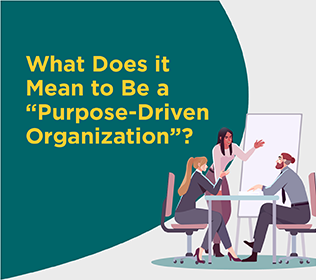
Employee Resource Groups (ERGs) are an important element of DEI. What are ERGs, and how can they work within your company?
What is an Employee Resource Group or ERG?
An Employee Resource Group is a group of employees with shared and similar identities or interests. They may be characterized demographically by categories such as race, gender, sexuality, or physical ability. For example, an organization may have an ERG for Black, Veteran, Disabled, and/or LGBTQ+ employees. Employees voluntarily participate in an ERG at their organization for various reasons, not least of which is to feel supported and included. ERGs can go a long way toward enhancing an atmosphere of inclusion at your company. ERGs across the United States have connected groups of employees who share interests and identities. Today, 90% of Fortune 500 companies have ERGs.
Why are ERGs important for businesses?
ERGs are important for businesses because they can help boost feelings of inclusion for underrepresented segments of workers, attract new talent, and improve the retention of employees who identify with underrepresented segments. ERGs give marginalized workers a voice and platform, provide access to sponsorship opportunities, and allow recommendations for improvements in internal processes. While creating an inclusive workplace, ERGs can advance an organization’s DEI strategy in several ways. These include the following.
- Foster inclusion by helping employees feel they belong and are part of a community, especially through connections that counter the feelings of being an “only” within an organization.
- Improve diversity by supporting the career advancement of their members, foster sponsorship within or outside the ERG, and improve the retention of underrepresented groups.
- Promote external impact within local communities by helping improve brand visibility through volunteer activities and charitable giving to causes that ERGs consider important.
- Through ERG inputs, companies better understand their customers and can cater products to underrepresented groups. ERGs also help reform business operations, for example, when members of underrepresented groups call attention to unfair processes.
Things to consider when incorporating ERGs at your company
Before making the decision to implement Employee Resource Groups within your company, you may want to consider a few things. Is your company ready to support the formation of ERGs? Have you identified a clear purpose and objective for the ERGs? Have you gained support from management at all levels? Have you identified operating guidelines for the ERG? What type of support is the company willing to provide to the ERGs? Are there any controls in place over ERG communications? For ERGs to be effective, the company must ensure clear communication about the ERG’s purpose and goals, align each ERG’s activities with the corporate DEI strategy, and provide sufficient organizational support to ERGs and ERG leaders.
We continue to see changes in workplace culture. Employees are more inclined to select and stay with an organization that aligns with their personal values. They want to be part of an organization that aligns with their views and where they feel like they belong. Employees want to feel heard, know that they have a voice, and can be involved in creating solutions to make the workplace inclusive and fair. The opportunity for organizations is clear: to position their ERGs as sources of ideas and engines for change. When managed well and supported properly, ERGs will become powerful enablers of your organization and your employees’ success. For more information on PrestigePEO’s DEI services and guidance, please contact your HRBP found under your PrestigePRO dashboard. If you are interested in PrestigePEO’s HR services including DEI practices, please click the button below to learn more.




